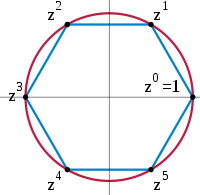Janko group J3
| Algebraic structure → Group theory Group theory |
|---|
 |
|
Modular groups
|
Infinite dimensional Lie group
|
In the area of modern algebra known as group theory, the Janko group J3 or the Higman-Janko-McKay group HJM is a sporadic simple group of order
- 27 · 35 · 5 · 17 · 19 = 50232960.
History and properties
J3 is one of the 26 Sporadic groups and was predicted by Zvonimir Janko in 1969 as one of two new simple groups having 21+4:A5 as a centralizer of an involution (the other is the Janko group J2). J3 was shown to exist by Graham Higman and John McKay (1969).
In 1982 R. L. Griess showed that J3 cannot be a subquotient of the monster group.[1] Thus it is one of the 6 sporadic groups called the pariahs.
J3 has an outer automorphism group of order 2 and a Schur multiplier of order 3, and its triple cover has a unitary 9-dimensional representation over the finite field with 4 elements. Weiss (1982) constructed it via an underlying geometry. It has a modular representation of dimension eighteen over the finite field with 9 elements. It has a complex projective representation of dimension eighteen.
Presentations
In terms of generators a, b, c, and d its automorphism group J3:2 can be presented as
A presentation for J3 in terms of (different) generators a, b, c, d is
Maximal subgroups
Finkelstein & Rudvalis (1974) found the 9 conjugacy classes of maximal subgroups of J3 as follows:
- PSL(2,16):2, order 8160
- PSL(2,19), order 3420
- PSL(2,19), conjugate to preceding class in J3:2
- 24: (3 × A5), order 2880
- PSL(2,17), order 2448
- (3 × A6):22, order 2160 - normalizer of subgroup of order 3
- 32+1+2:8, order 1944 - normalizer of Sylow 3-subgroup
- 21+4:A5, order 1920 - centralizer of involution
- 22+4: (3 × S3), order 1152
References
- ↑ Griess (1982): p. 93: proof that J3 is a pariah.
- Finkelstein, L.; Rudvalis, A. (1974), "The maximal subgroups of Janko's simple group of order 50,232,960", Journal of Algebra, 30: 122–143, doi:10.1016/0021-8693(74)90196-3, ISSN 0021-8693, MR 0354846
- R. L. Griess, Jr., The Friendly Giant, Inventiones Mathematicae 69 (1982), 1-102. p. 93: proof that J3 is a pariah.
- Higman, Graham; McKay, John (1969), "On Janko's simple group of order 50,232,960", Bull. London Math. Soc., 1: 89–94; correction p. 219, doi:10.1112/blms/1.1.89, MR 0246955
- Z. Janko, Some new finite simple groups of finite order, 1969 Symposia Mathematica (INDAM, Rome, 1967/68), Vol. 1 pp. 25–64 Academic Press, London, and in The theory of finite groups (Edited by Brauer and Sah) p. 63-64, Benjamin, 1969.MR 0244371
- Richard Weiss, "A Geometric Construction of Janko's Group J3", Math. Zeitschrift 179 pp 91–95 (1982)
External links
- MathWorld: Janko Groups
- Atlas of Finite Group Representations: J3 version 2
- Atlas of Finite Group Representations: J3 version 3